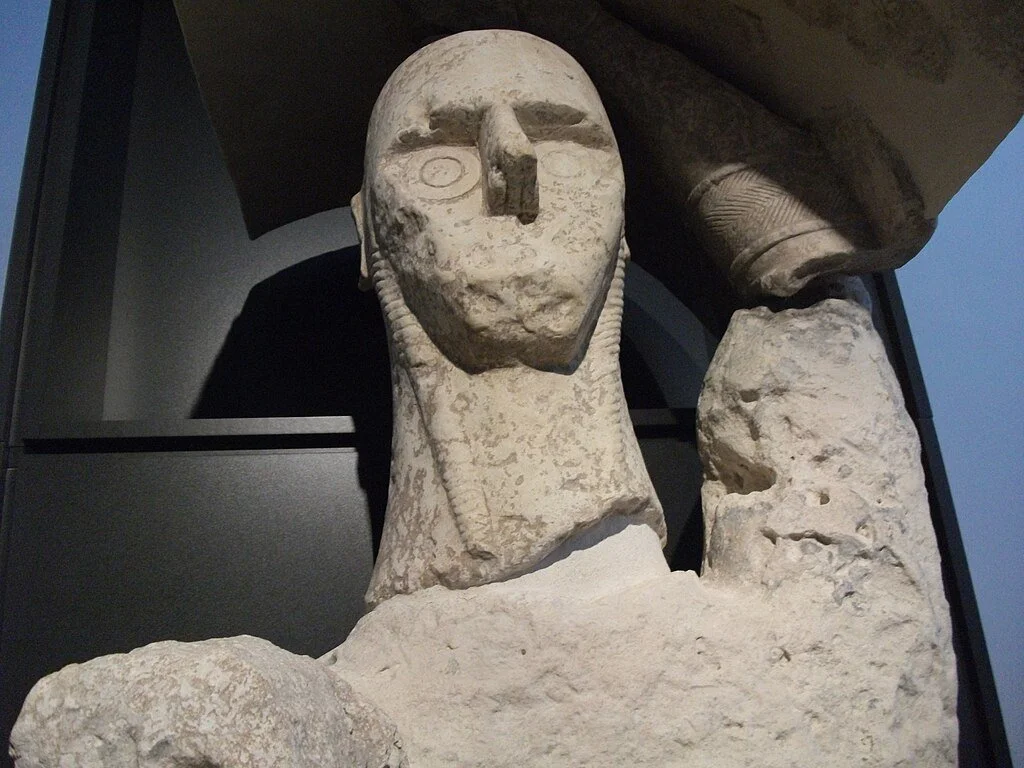ARCHAEOLOGICAL SITES
Fascinating archaeological sites filled with incredibly rich history.



-

Nuraghe of Barumini
Barumini, a small village located in the province of “South Sardinia”, which preserves within its territory a unique and priceless treasure. We are talking about the Nuragic village of Su Nuraxi, a place in the world that will leave you speechless, for all lovers of ancient populations among the World Heritage Sites.
Photo: Norbert Nagel, CC BY-SA 3.0
-

Cabras
Cabras, whose basin is famous for the variety of aquatic birds that breed in the reeds, houses the famous giants from Mont'e Prama, the oldest giant statues in the Mediterranean, and the archaeological remains found at Tharros in the Municipal Archaeological Museum Giovanni Marongiu. Costa Verde, almost 50 kilometres of wide beaches, rocky coves, white seabed and golden sand, whose distinction lies in the silence and wilderness that surrounds these places.
Photo: DedaloNur, CC BY-SA 3.0
-

Tempio Pausania
In central Gallura, at the foot of Mount Limbara, Tempio Pausania is famous for working granite and cork, to which the cork machinery museum is dedicated, for its wines (vermentino, karana and moscato), and for lu carrasciali timpiesu, an allegorical carnival par excellence.
Photo: Gianni Careddu, CC BY-SA 4.0
-

Nuraghe Gennargentu
A triumph of nature in a wild and pristine area. In spring, its prairies are graced with colourful sa rosa ‘e monte, or peonies, which in Antiquity were the only flowers to bloom on Mt. Olympus. The Gennargentu is a fairytale land in winter, when the snow whitens the peaks, and everything seems to come to a halt.
Photo: David Edgar, CC BY-SA 3.0
-

Park of Arzachena
The Archaeological Park of Arzachena is about twenty kilometres from Costa Smeralda in the heart of Gallura. An area rich in monuments, including nuragic complexes and necropolises, spread over eight sites dating from the 5th to the 2nd millennium BC.
Photo: Mboesch, CC BY-SA 4.0
-

Nuraghe Arrubiu
The Nuraghe Arrubiu is one of the largest nuraghes in Sardinia. It is in Orroli, in the province of South Sardinia. Its name means "red nuraghe" in the Sardinian language, which derives from the basalt stones it was built with.
Photo: Hans Peter Schaeferhttps://creativecommons.org/licenses/by-sa/3.0/deed.en
-

Santa Barbara Nuraghe
In central-northern Sardinia, three kilometres from Macomer in the Marghine sub-region, stands one of the best-known prehistoric island monuments, an epigone of the Nuragic civilisation.
Photo: Gianni Careddu, CC BY-SA 4.0
-

Villasimius Archeological Museum
The Museum of Archaeology of Villasimius is located in a beautifully renovated country house, in which interesting architectural elements, such as a “ladiri”, a wall ofraw bricks of clay and straw, survive.
Photo: Olaf Tausch, CC BY 3.0
-

Anfiteatro Romano Cagliari
The most important Roman testimony in Cagliari is the Roman Amphitheatre, dating back to between the first and second centuries BC, and was obtained by digging into the rock of the valley. Gladiator fights, plays, and death sentences - this was what was staged in the arena. The Amphitheater had a capacity of 10,000 spectators and featured three tiers of tiers, each reserved for the respective social class. Excavations to bring to light the remains of the Amphitheatre began between 1866 and 1868, and consolidation and restoration date back to 1937.
Photo: Mike Peel, CC BY-SA 4.0
-

Lu Brandali
One of the 10 Sardinian prenuragic and nuraghi sites. Lu Brandali, consists of a nuraghe, a beautiful village, and a tomb of a giant. This interesting and evocative nuragic complex, surrounded by a wonderful forest of olive trees, myrtles, mastic trees, and junipers, is the expression of a civilization that has left the traces of an organized daily life dedicated to work and the cult of the dead. It can be placed between the fourteenth century and the tenth century BC, it is composed of a mixed-type nuraghe, a tholos, a corridor, a tomb of the giants, where dozens of bodies were found, a village with semicircular huts, funeral circle. The nuraghe consists of a keep with a rampart and two towers.
Stahlkocher, CC BY-SA 3.0
-

Nuragic Village of Tiscali
It is an archaeological site in the central-eastern region of the province of Nuoro. It’s located inside a massive cave in Monte Tiscali, which makes it one of the coolest archeological sites in Sardinia! Inside the cave are the remnants and remains of various circular and rectangular dwellings that date back to the 15th to 18th centuries BC. Archeologists have also proven that this cave was repopulated around the 1st century BC and then inhabited through the Middle Ages.
Photo: FrancescaEA, CC BY-SA 4.0
-

Nuragic village of Palmavera and Anghelu Ruju Necropolis
The Nuragic Complex of Palmavera and the Necropolis of Anghelu Ruju are located 12 km away from each other and a short distance from the beautiful Alghero. Both are exceptional archaeological legacies from the pre-Nuragic and Nuragic periods. The Nuragic Complex of Palmavera consists of a central body with two towers, accompanied by an antemural and 50 huts of a village, once estimated to be about 200. A few kilometers further inland, we find the Necropolis of Anghelu Ruju, the largest complex of domus de janas in Sardinia that testifies to a civilization that lived 5,000 years ago: the necropolis dates back to around 3,200 BC ,and the valley has 38 excavated tombs.
Photo: Giovanni Dore, CC BY 3.0
